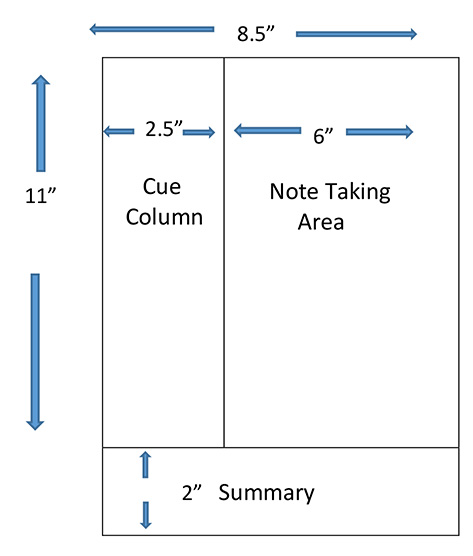The Cornell Note Taking System
The Cornell method of note taking provides a systematic way to condense and organize notes. Here is the layout of the three sections of a Cornell Notes page using a letter-sized (8 ½” x 11”) page:

Note Taking Area
Record the lecture as fully and as meaningfully as possibly here.
Cue Column
While you are in class taking notes, keep this column empty. Soon after class, reduce your notes to concise jottings as cues for Reciting, Reviewing and Reflecting.
Summary
Sum up each page of your notes in a sentence or two.
This format provides the perfect opportunity for following through with the 5 Rs of note taking:
Record
During the lecture, record as many meaningful facts and ideas as you can in the Note Taking Area
Reduce
As soon as possible after the lecture, summarize these facts and ideas concisely in the Cue column. Summarizing clarifies meanings and relationships, reinforces continuity, and strengthens memory.
Recite
Cover the Note taking Area and, using only your cue column, talk over the facts and ideas of the lecture as fully as you can in your own words. Then verify what you said with the Note Taking Area.
Reflect
Draw out opinions from your notes and use them as a starting point for your own reflections on the course and how they relate to your other courses. Reflection will help prevent ideas from being inert and soon forgotten.
Review
Spend at least 10 minutes every week in quick review of all your notes, and you will retain most of what you have learned.